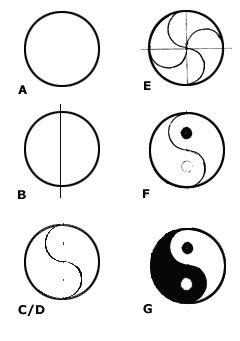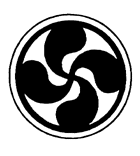A monk was tempted by the devil to stop calling on Allah since Allah never appeared answering "Here am I!"
Bringing a message from God, the Prophet Khadir appeared to the monk in a vision:
"Was it not I who summoned thee to My service?
"Was it not I who made thee busy with My name?
"Thy calling ‘Allah was my ‘Here am I!’"
-- Jalal-uddin Rumi
Suspicion and belief are much stronger than knowledge. Suspicion and belief are robust, turgid with blood and muscle. They are bullies and can afford to be. Knowledge is an anemic, pitiable thing that always needs to be protected. People willingly die for beliefs or kill for mere suspicion. Facts are what occasionally cause executions and then only after great deliberation and consensus, an action by committee.
Anyone who thinks all this belief-talk is a prelude to our launching a raft of flimsy coincidence to navigate a connection between Chinese and Basque civilizations is wrong.
There are, however, a few peculiar things that the Basques and the Chinese have in common and while these things don’t constitute joint tenancy, they do suggest a chance assignation that might merit a look or two.
Let’s start with the "national" insignia of the Basques, the oviphile swastika. According to those who note such things, throughout Basque history the oviphile swastika has been the Basque’s principal decorative motif... not the crude 4-gamma swastika that was known throughout the world and which the Nazis made infamous, but the geometrically advanced oviphile swastika.
What, then, is an oviphile swastika and how to we construct it? It’s really pretty simple: we need know no more geometry than stone age man knew. Yet, while most of us have wondered how to do it, few of us have bothered to figure out the method. We usually make a free-hand mess of it.
Pre-literate man needed only a pivoting point, a string, and an inscribing marker such as a sharp stone or a charred stick. After all, Stonehenge’s circles are true circles, i.e., all points on the circumference are equidistant from the center. But for now we’ll cheat and use a compass and pencil.
Instructions for drawing an oviphile swastika
 The method for constructing a perfect oviphile swastika and its relation to Daoism’s familiar Tai Ji (yin/yang) symbol.
The method for constructing a perfect oviphile swastika and its relation to Daoism’s familiar Tai Ji (yin/yang) symbol.
|
|
1. Draw a circle (A).
2. Draw a straight line through the center of the circle (B). By definition a straight line through the center bisects the circle. (This construction additionally has great calendric significance. As we previously noted, it splits the full moon in two "half moons"; the first marking the 7th day of the month and the second marking the 21st day of the month. The full moon is, obviously, the 14th. The half moons are the only points in the lunar phases in which an exactly straight line appears. Obviously, these are important time-markers, dates upon which all viewers can agree.)
3. Bisect each radius (C/D). Although this can be done geometrically by scribing a line between extended intersecting arcs, we’ll use a ruler to locate the middle of both radii.
4. Place the compass pivot at the midpoint of the left radius, open the compass to 1/2 of the original radius and scribe a semi-circle below the radius (C/D).
 A more elaborate Basque oviphile swastika.
A more elaborate Basque oviphile swastika.
|
|
5. Repeat #4 on the right radius only this time drawing the semi-circle above the radius (C/D).
6. Close the compass until it can draw a little circle around those radial midpoints. This will become the black dot in the white comma or the white dot in the black (F).
7. Erase all the unnecessary lines. We now have a Tai Ji symbol (G).
8. To create the oviphile swastika, omit the little center circles. Rotate the figure a quarter turn and repeat the process (E).
An even fancier construction is obtained by the obvious repetition of the process within the half-radius lines of the swastika. We reproduce here one of the most popular of the Basque’s oviphile swastika designs.
|
So, this is how the ancients did it.
Alasdair Clayre in his Heart of the Dragon television series and accompanying book displayed an interesting picture which we here reproduce. Clayre’s surprising caption states that "the Tai Ji symbol wasn’t introduced into China until the Tenth Century." This would place its introduction in the Southern Song (Sung) Dynasty at a time, coincidentally, when much was being made of oxen and ox herders and Zen art was approaching the zenith of its expressive power.


